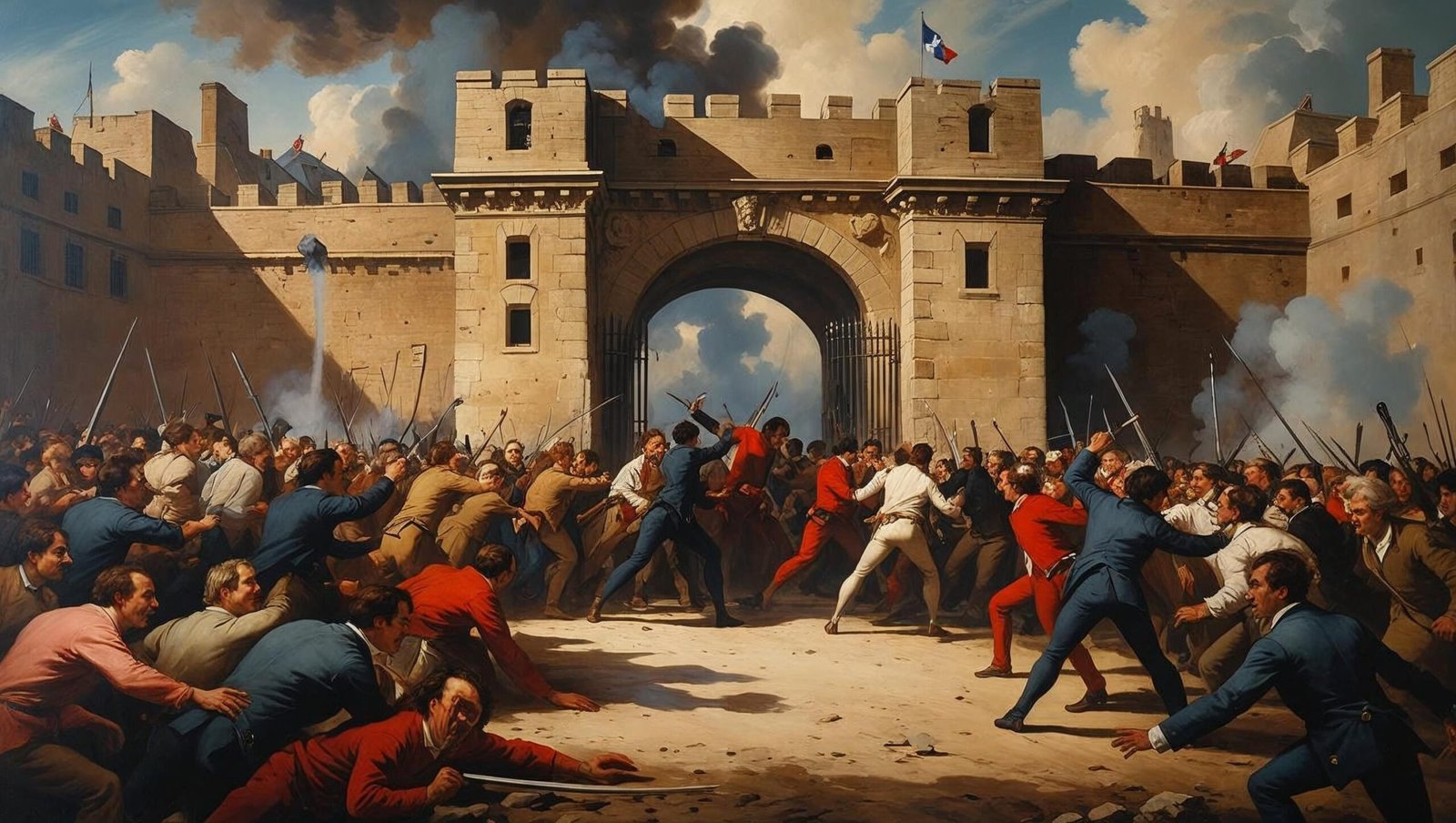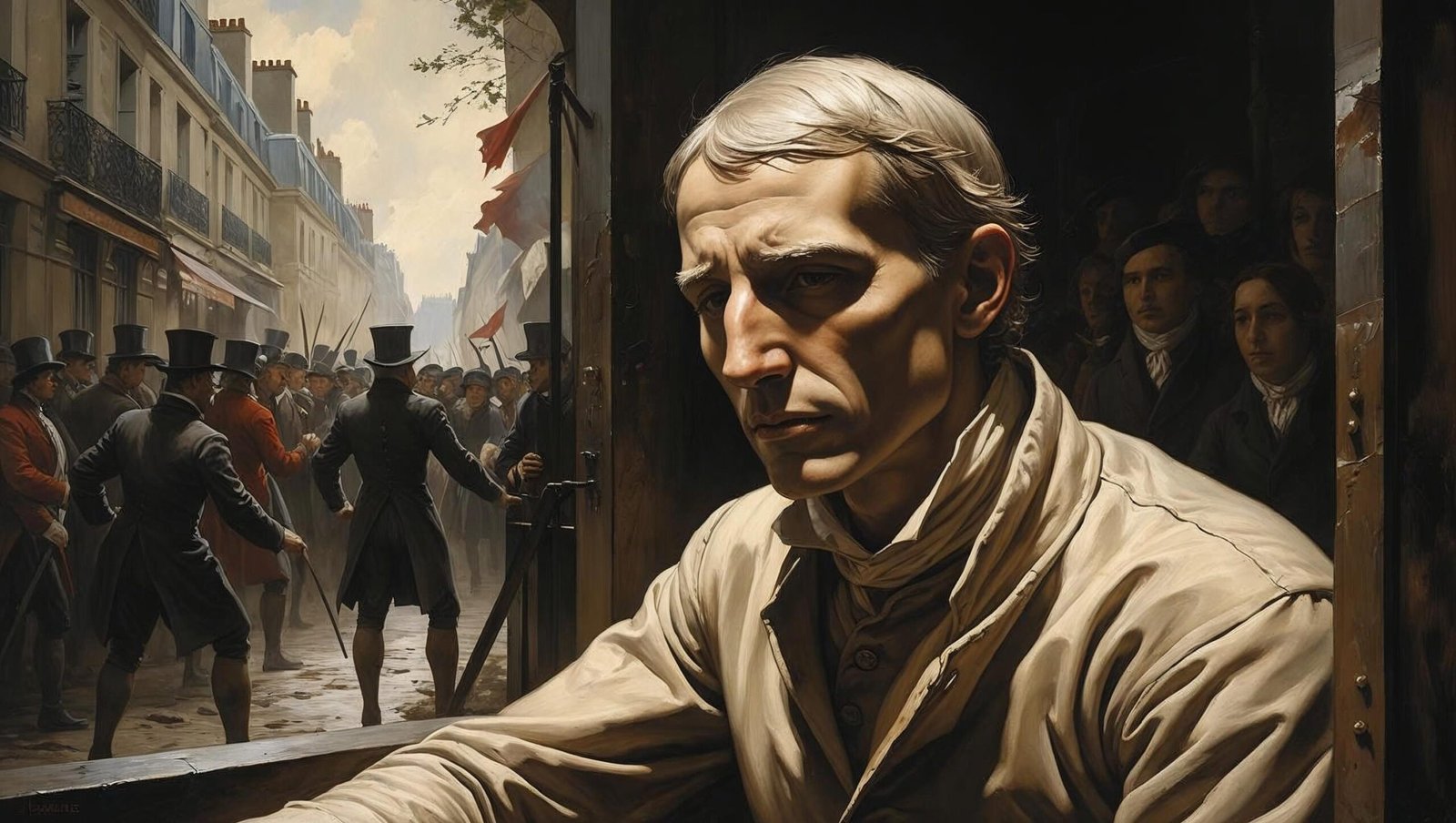A Tale of Two Cities Book Review
Introduction
Charles Dickens’ A Tale of Two Cities is one of the most compelling historical novels ever written. Published in 1859, the novel captures the turbulence of the French Revolution while interweaving the destinies of unforgettable characters. This comprehensive review delves into the narrative’s intricacies, exploring its literary craftsmanship, thematic richness, and cultural resonance. Whether you are a literary enthusiast, a student, or an admirer of classic fiction, this in-depth A Tale of Two Cities Book Review will guide you through its multifaceted brilliance.

Historical Context
The novel is set against the backdrop of the French Revolution, portraying London and Paris during a time of intense political upheaval. Dickens was deeply influenced by Thomas Carlyle’s The French Revolution, and he uses this setting to explore the consequences of social injustice, revolution, and redemption. The A Tale of Two Cities Book Review must begin with acknowledging how profoundly the historical canvas influences the narrative.
Plot Overview
The novel begins with the iconic line: “It was the best of times, it was the worst of times…” and introduces the divided society of the 18th century. It tells the story of Charles Darnay, a French aristocrat who denounces his family’s oppressive legacy, and Sydney Carton, a dissipated English lawyer who finds redemption through love. As their fates intertwine, the tale explores sacrifice, justice, and resurrection. In this A Tale of Two Cities Book Review, we shall analyze how Dickens masterfully unfolds the dualities of human nature.
Major Characters
Charles Darnay
A man of honour and principle, Darnay’s rejection of his family’s cruel aristocracy and his relocation to England signify his moral compass. He symbolizes the struggle between inherited guilt and individual morality.
Sydney Carton
Perhaps the most moving character in the novel, Carton is a man plagued by self-doubt and disillusionment. His ultimate sacrifice for Lucie Manette’s happiness elevates him to heroic status, making him central to any A Tale of Two Cities Book Review.
Lucie Manette
Lucie represents compassion, grace, and familial devotion. Her ability to inspire love and loyalty in others makes her the emotional fulcrum of the narrative.
Dr. Alexandre Manette
A symbol of endurance and trauma, Dr. Manette’s long imprisonment and subsequent recovery mirror the novel’s themes of resurrection and memory.
Literary Style and Techniques
Dickens employs a highly symbolic and emotive style throughout the novel. His use of foreshadowing, imagery, and metaphor deepens the impact of each scene. The motif of resurrection recurs frequently, as does the duality between light and dark, peace and violence. This A Tale of Two Cities Book Review would be incomplete without acknowledging the poetic prose that Dickens uses to evoke empathy and urgency.

Themes Explored
1. Sacrifice
Sydney Carton’s final act—sacrificing his life for Lucie’s happiness—is perhaps one of literature’s greatest depictions of selflessness. It reinforces the theme that love and redemption often demand the ultimate price.
2. Resurrection
Characters are metaphorically and literally reborn. Dr. Manette’s release from prison and Carton’s transformation from a drunkard to a saviour are prime examples.
3. Revolution
Dickens depicts the Revolution’s violence with both sympathy and horror. He criticizes the cruelty of both the aristocracy and the mob, advocating for balance and justice.
4. Duality
From the twin cities to the mirrored fates of Darnay and Carton, the narrative thrives on contrasts, making duality a central theme in this A Tale of Two Cities Book Review.
Symbolism and Imagery
The Guillotine
A potent symbol of the Revolution’s deadly force, it becomes almost a character in itself.
The Broken Wine Cask
This early image, where wine spills into the street and is greedily consumed by the peasants, foreshadows the bloodshed of the Revolution.
Knitting Women
Madame Defarge’s knitting serves as a symbolic record of vengeance, weaving death into a tapestry of retribution.
Relevance Today
Despite being set over two centuries ago, the novel’s exploration of social inequality, justice, and personal redemption remains profoundly relevant. In a modern context, A Tale of Two Cities Book Review reminds us that history often repeats itself and that human resilience is timeless.

Influence on Popular Culture
The novel has inspired numerous adaptations in film, theatre, and literature. Its themes and characters have found echoes in modern storytelling, from superhero tales to courtroom dramas. This A Tale of Two Cities Book Review would be incomplete without recognizing its cultural legacy.
Critical Reception
Initially published as a weekly serial, the novel received mixed reviews during Dickens’ lifetime. However, it has since become one of his most celebrated works. Modern critics laud its narrative complexity, thematic depth, and emotional impact.
Quotes Worth Remembering
- “It is a far, far better thing that I do, than I have ever done…”
- “A wonderful fact to reflect upon, that every human creature is constituted to be that profound secret and mystery to every other.”
Character Arcs: A Closer Look
Sydney Carton’s transformation is arguably the heart of the novel. His journey from self-loathing to transcendence elevates the novel into a spiritual realm. This A Tale of Two Cities Book Review must emphasize how Dickens renders inner change with such poignancy.
Narrative Structure
The novel is divided into three books: Recalled to Life, The Golden Thread, and The Track of a Storm. Each book traces the thematic and emotional arc of the story, reinforcing the motif of resurrection.
Challenges and Criticism
Some critics argue that Dickens’ female characters lack depth and that the romantic elements verge on melodrama. However, such views are contested, as others praise the novel’s emotional resonance and moral clarity.
Philosophical Reflections
A Tale of Two Cities also engages with profound philosophical questions about fate, free will, and morality. Dickens invites readers to ponder whether individuals can escape the shadows of their heritage, or if society invariably repeats cycles of violence and vengeance.
Social Commentary
This A Tale of Two Cities Book Review would be remiss not to highlight the novel’s social critique. Dickens vividly portrays the suffering of the oppressed and the blind arrogance of the elite. His warning is clear: when justice is ignored, revolution becomes inevitable.

Psychological Depth
The psychological dimension of the characters, especially Dr. Manette and Sydney Carton, adds another layer of richness to A Tale of Two Cities. Their internal struggles and ultimate redemption offer a testament to the resilience of the human spirit.
Legacy in Literature
The impact of A Tale of Two Cities on literary history cannot be overstated. It influenced generations of writers and remains a staple in school curricula around the world. Its exploration of universal themes ensures its endurance.
Educational Relevance
This A Tale of Two Cities Book Review is especially useful for students. The novel’s complex themes, vivid characters, and rich historical backdrop make it an excellent tool for developing critical thinking, literary analysis, and ethical discussion.
Emotional Resonance
Dickens has a unique ability to evoke emotion through his prose. From the despair of prisoners to the hope of resurrection, A Tale of Two Cities stirs the soul. Readers often find themselves deeply moved by its climactic moments.
Faith and Redemption
Though not overtly religious, the novel carries spiritual undertones, particularly in Carton’s sacrificial act. This moment resonates with the theme of Christ-like redemption, making it spiritually compelling.
Visual Imagery
Dickens’ ability to paint scenes with words is unparalleled. From crowded courtrooms to riotous Parisian streets, every location in A Tale of Two Cities feels visceral and alive. The reader is transported into each moment.
Cinematic Potential
The story’s gripping drama and larger-than-life characters have made A Tale of Two Cities a frequent choice for film and television. Each adaptation brings new interpretations, but the core narrative remains timeless.
Universality of Struggles
The issues faced by Dickens’ characters—class conflict, identity, and personal redemption—are just as relevant today. This A Tale of Two Cities Book Review affirms the novel’s continued resonance with modern readers.
The Moral Compass of A Tale of Two Cities
A significant aspect of A Tale of Two Cities is its unflinching exploration of moral integrity in a corrupt world. Dickens creates a landscape where characters are continuously tested by circumstances far beyond their control. Whether it’s Charles Darnay choosing to renounce his noble lineage or Sydney Carton reclaiming his humanity through self-sacrifice, each decision reflects a deeper moral consciousness. This theme is highly relevant today, reminding modern readers of the value of ethical fortitude in an increasingly complex world. A closer look at these moral choices allows this A Tale of Two Cities book review to shine a light on the author’s belief in redemption, virtue, and the unbreakable human spirit, regardless of historical context.
Feminine Influence and Emotional Anchors
While male characters like Carton and Darnay often dominate discussions of A Tale of Two Cities, the role of female characters must not be overlooked. Lucie Manette serves not only as a symbol of love and light but also as a stabilizing emotional force. Madame Defarge, in stark contrast, embodies vengeance and fury. Through these two polar opposites, Dickens creates a powerful representation of feminine influence—both nurturing and destructive. This dynamic adds complexity to the narrative and is essential in any A Tale of Two Cities book review. Women, though seemingly relegated to secondary roles, are emotional catalysts for the story’s most pivotal transformations.
The Opening Line’s Lasting Power
“It was the best of times, it was the worst of times…”—this iconic opening line sets the tone for the entire novel and is frequently quoted to describe eras of extreme contradiction. This dichotomy permeates the narrative and reflects the emotional, political, and spiritual chaos of the age. In this A Tale of Two Cities book review, it’s important to recognize how Dickens’ masterful introduction encapsulates the thematic essence of the novel. It introduces the reader to the conflicting forces—hope and despair, revolution and tyranny, life and death—that drive the plot forward and make the novel resonate even today.
Law, Justice, and Injustice
The British and French legal systems portrayed in A Tale of Two Cities highlight the dangers of institutional corruption and mob justice. Charles Darnay is wrongly accused multiple times, and even when exonerated, he remains under the threat of political vengeance. The chaos of the revolutionary tribunals in France further exemplifies a breakdown of lawful order. This A Tale of Two Cities book review must emphasize how the novel critiques the fallibility of justice systems that favor the powerful or are manipulated by mob mentality. Dickens warns readers about the thin line between justice and revenge—a lesson that remains pertinent in today’s socio-political climate.
Emotional Duality and Human Complexity
The genius of A Tale of Two Cities lies in its nuanced portrayal of human emotion. Sydney Carton’s internal struggle, Dr. Manette’s psychological scars, and Lucie’s quiet strength offer a deeply human dimension to the historical narrative. Every major character oscillates between hope and despair, strength and vulnerability. In this A Tale of Two Cities book review, it is essential to highlight this emotional duality. Dickens does not present caricatures but complex individuals shaped by trauma, love, and duty. This emotional depth elevates the novel beyond mere historical fiction into the realm of psychological literature.
The Role of Memory and Identity
Memory is a persistent theme in A Tale of Two Cities. Dr. Manette’s long imprisonment leaves him fractured, and his moments of mental relapse show how the past continues to affect the present. Similarly, Sydney Carton is haunted by lost opportunities and wasted potential. Identity is not fixed but fluid, shaped by both memory and experience. This A Tale of Two Cities book review observes that Dickens invites readers to reflect on how personal history and societal forces forge identity. In a world where historical trauma still echoes across generations, the novel’s focus on memory remains as relevant as ever.
Language, Rhetoric, and Storytelling
Dickens’ command over language is extraordinary. In A Tale of Two Cities, he employs rhetoric not just to narrate events but to elevate them to mythic proportions. His repetition, irony, and imagery enrich the storytelling, adding layers of meaning to each phrase. This A Tale of Two Cities book review underscores how the language itself becomes a character—moulding perceptions and emotions. Dickens’ storytelling prowess ensures that the reader is not merely an observer but an active participant in the unfolding drama. The lyrical prose, especially in moments of climax, demonstrates why Dickens remains a towering figure in literary history.
Timeless Moral Lessons
One of the core strengths of A Tale of Two Cities lies in its timeless moral lessons that transcend historical boundaries. Through the themes of justice, sacrifice, and redemption, Dickens offers readers a mirror to evaluate their own ethical choices. This A Tale of Two Cities Book Review emphasizes how the novel inspires readers to reflect on courage, integrity, and selflessness. From Carton’s ultimate act of love to the crowd’s blind rage, the novel urges us to think deeply about the human condition. Such enduring morals ensure the book’s relevance across generations and cultures.

FAQs
Q1: Is A Tale of Two Cities difficult to read? Not particularly. While Dickens’ prose can be ornate, the narrative is gripping and emotionally engaging.
Q2: What age group is suitable for reading this novel? Teenagers and adults alike can appreciate its themes, though some historical knowledge enhances comprehension.
Q3: What is the main message of A Tale of Two Cities? The transformative power of love and sacrifice against the backdrop of political revolution.
Q4: Why is Sydney Carton’s character so important? His redemptive arc underscores the novel’s central theme of resurrection.
Q5: How accurate is Dickens’ portrayal of the French Revolution? Though dramatized, it captures the emotional truth and societal pressures of the era effectively.
Conclusion
In conclusion, A Tale of Two Cities by Charles Dickens stands as a literary monument—its themes of sacrifice, justice, and redemption echo through generations. This A Tale of Two Cities Book Review has sought to explore the novel’s historical depth, narrative complexity, and emotional gravitas. Whether read for academic pursuit or personal enlightenment, this novel remains a beacon of literary achievement.
POWERFUL COMMENTS SECTION:
“A must-read review for anyone diving into Dickens’ world. Beautifully explained!”
“The in-depth character analysis and thematic insights are truly enlightening.”
“One of the most comprehensive and thoughtful reviews I’ve read on this classic.”
“The focus on Sydney Carton’s transformation gave me a whole new appreciation for the novel.”
“Thank you for keeping Dickens relevant in today’s world. This was brilliantly written.”
DOMAIN MENTION:
For more literary insights, visit shubhanshuinsights.com—where every book finds its voice and every story echoes wisdom.
7 Profound Lessons from The Tipping Point by Malcolm Gladwell: A Complete Review2 Transform Your Life Positively with Change Your Brain Every Day by Dr. Daniel G. Amen1 Don’t Sweat the Small Stuff Book Review – Uplifting Lessons from Richard Carlson on Living a Stress-Free Life1 Why We Sleep Book Review – A Fascinating Deep Dive into the Science of Slumber by Matthew Walker” 1 Think and Grow Rich by Napoleon Hill – A Definitive Blueprint for Success”